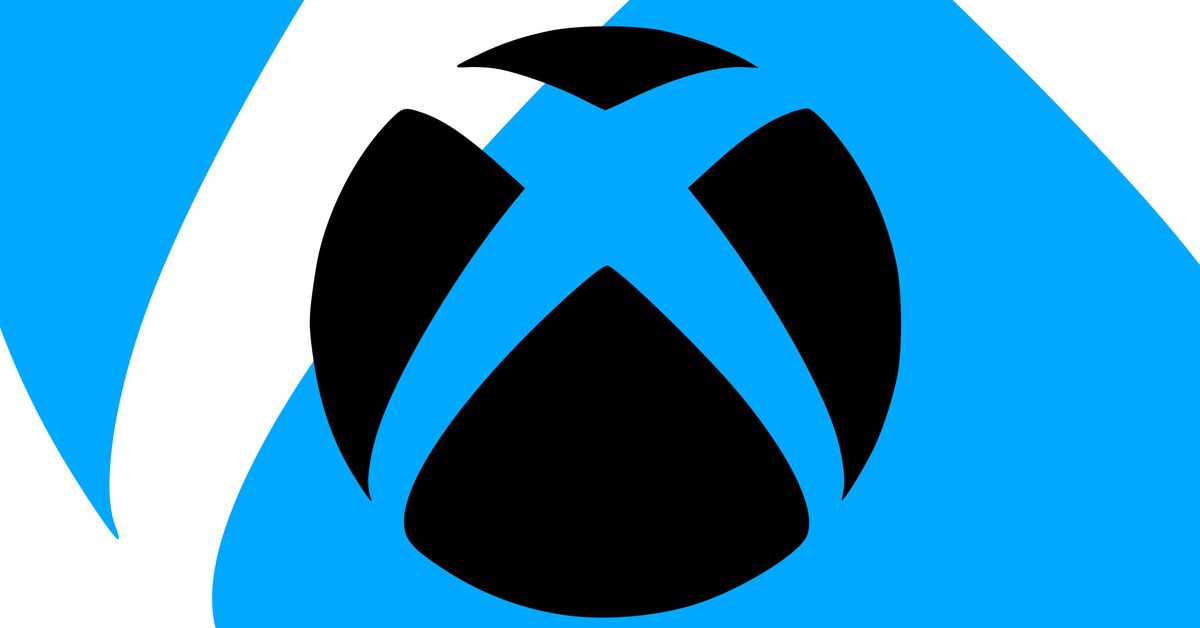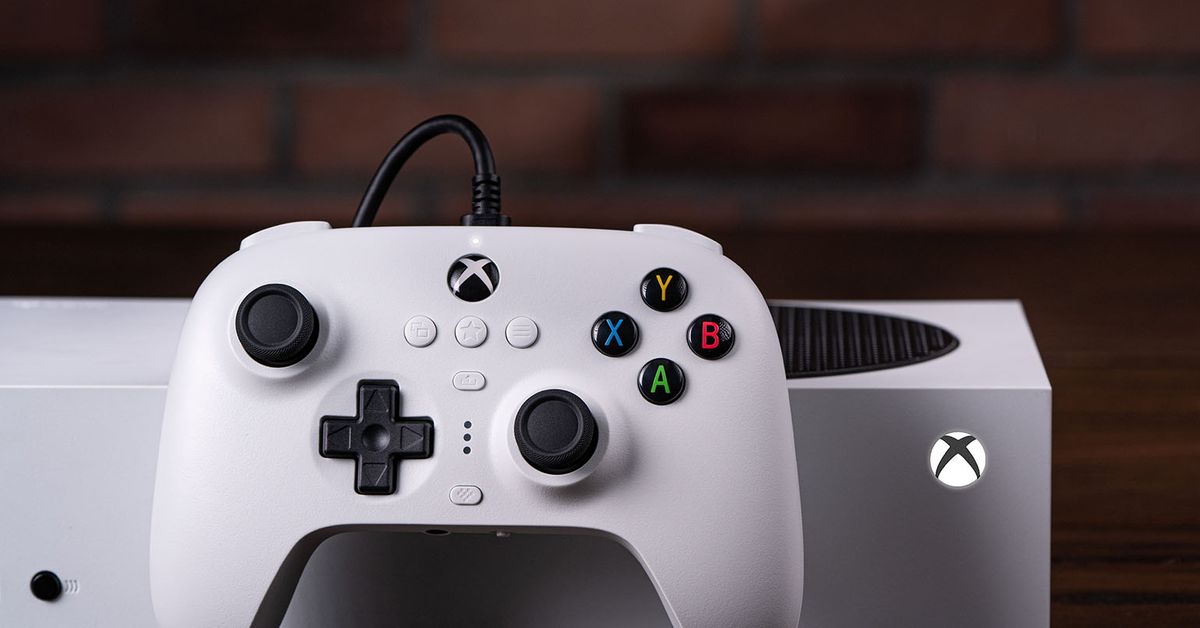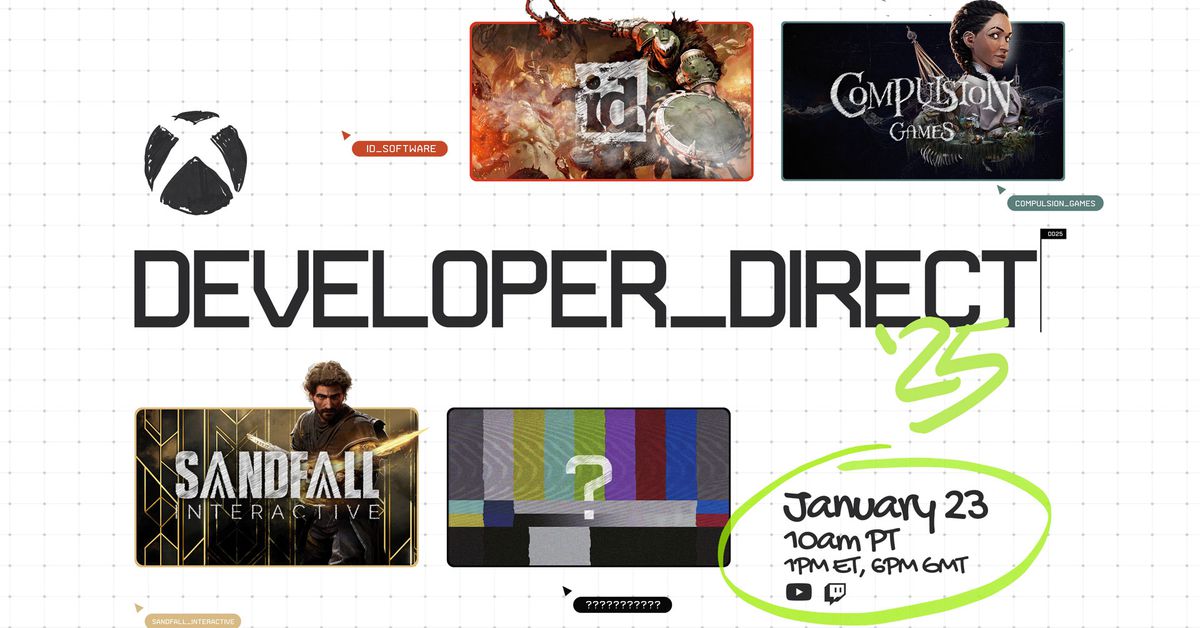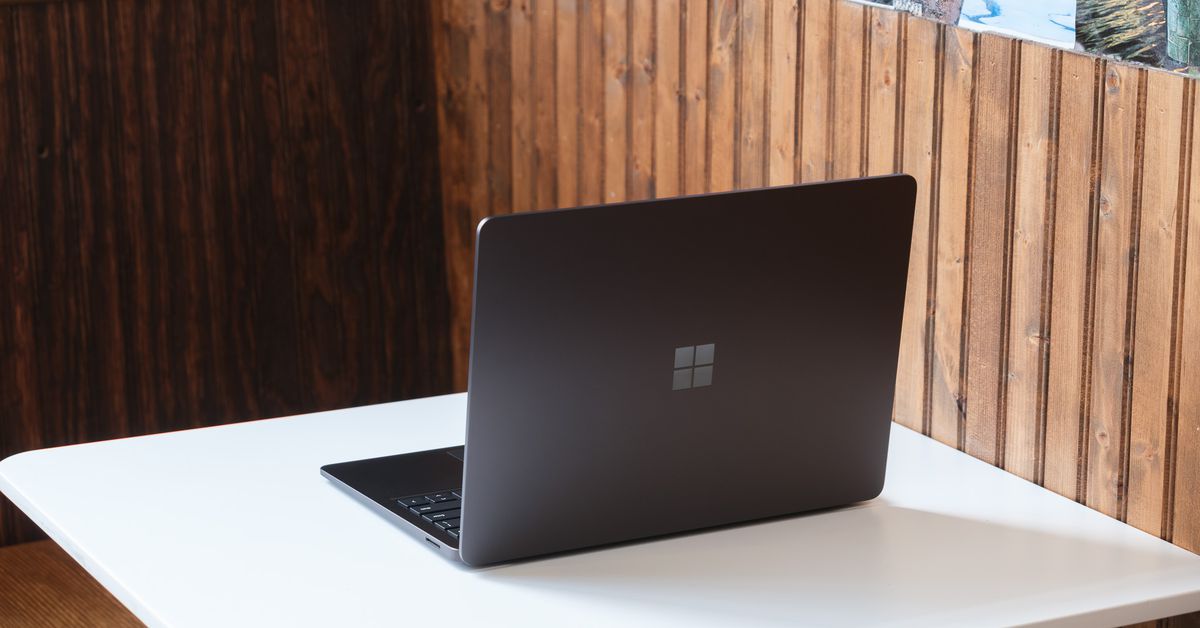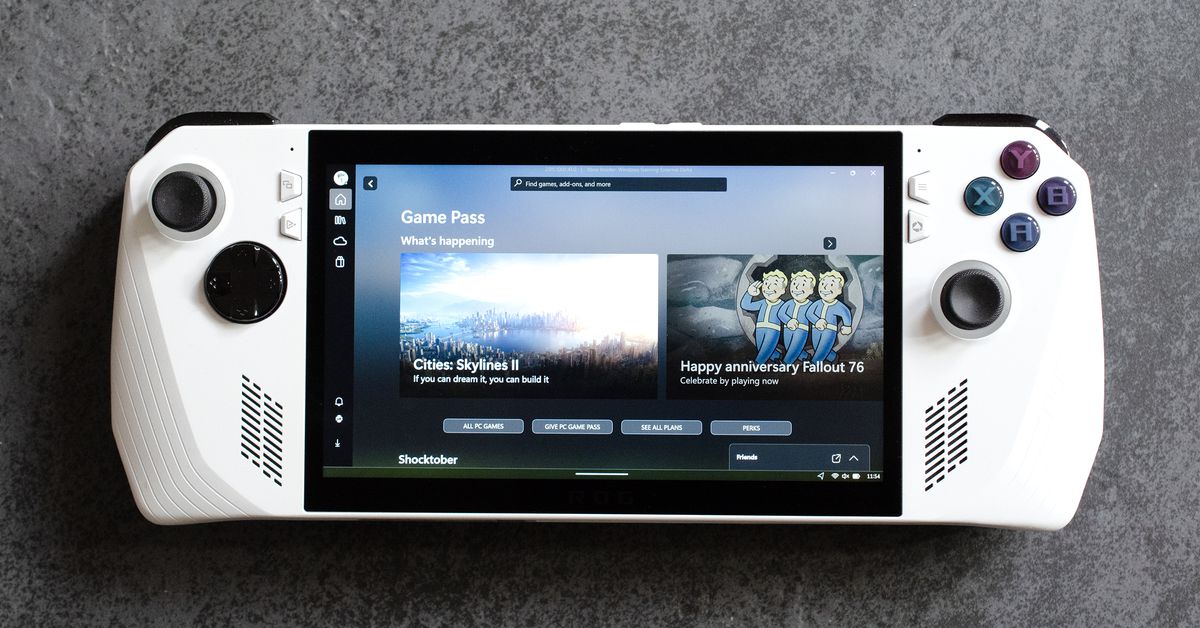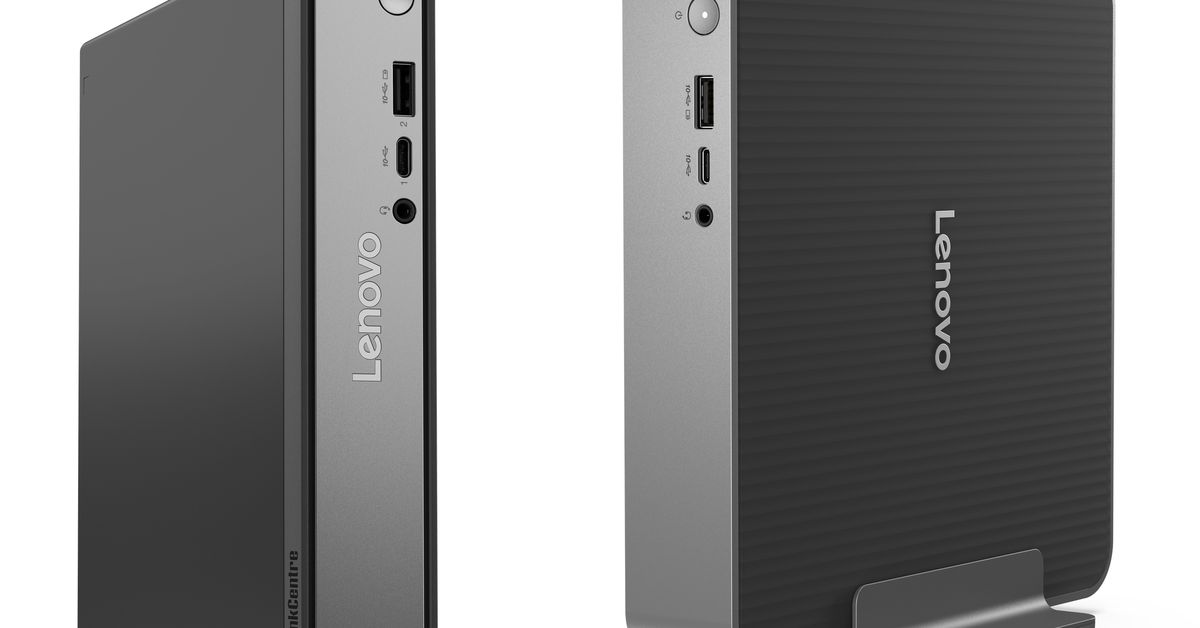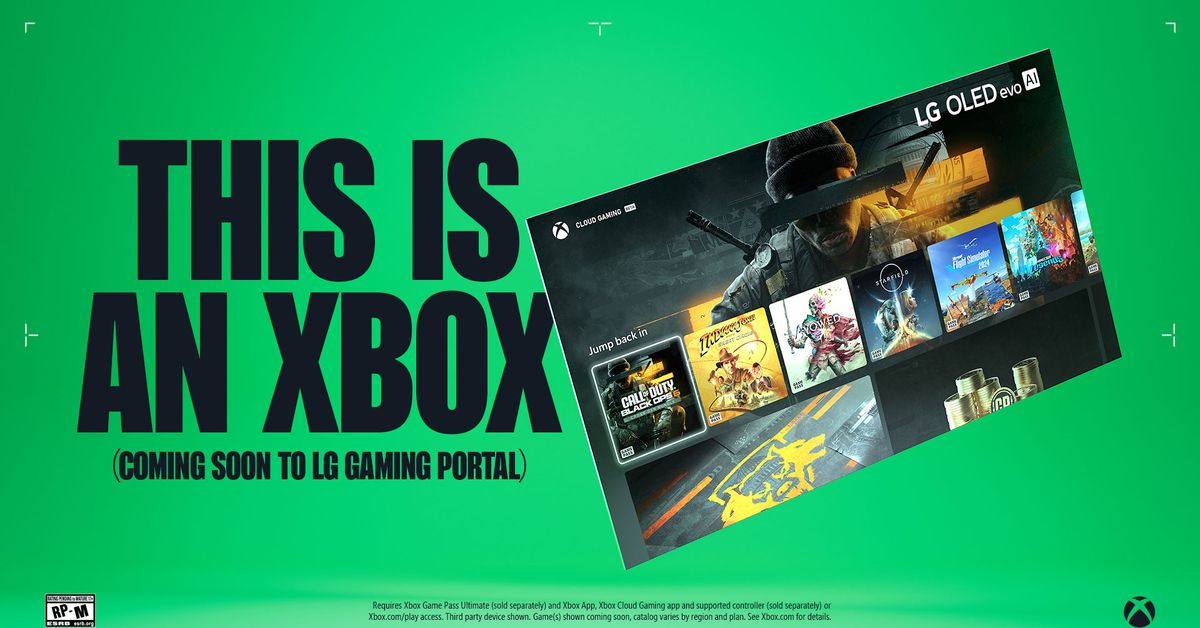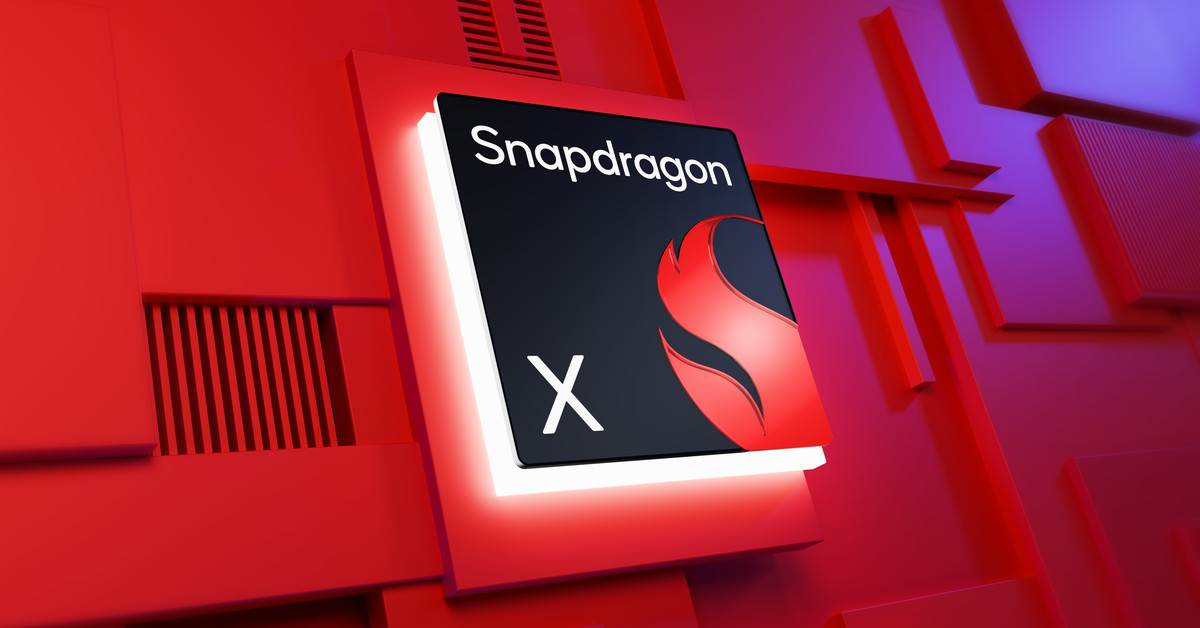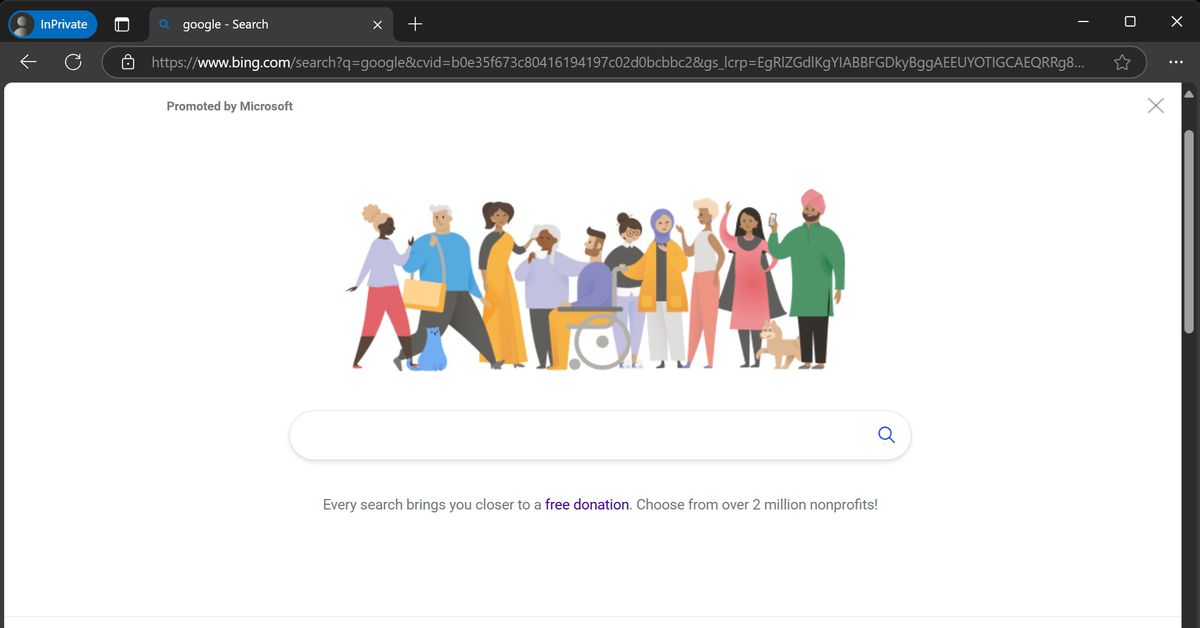Lenovo’s mysterious “future of gaming handhelds” event at CES delivered confirmation this week that Microsoft is combining “the best of Xbox and Windows together” for handhelds. Microsoft’s VP of Next Generation, Jason Ronald, spoke to my colleague Sean Hollister after the event to reveal that not only are big changes coming to the Windows handheld experience but also “you’re going to see a lot of stuff as early as this year.”
I’ve been writing for more than a year about how Microsoft needs to overhaul Windows on handhelds and use an Xbox OS UI on top, keeping the complexity of the Windows desktop hidden away. That sounds exactly like what Microsoft is about to do. “I would say it’s bringing the best of Xbox and Windows together, because we have spent the last 20 years building a world-class operating system, but it’s really locked to the console,” says Ronald. “What we’re doing is we’re really focused on how do we bring those experiences for both players and developers to the broader Windows ecosystem.”
Ronald says Microsoft’s “goal is to deliver an Xbox experience that puts your content front and center, and not the Windows desktop that you have today.” For this to happen in reality, Microsoft has to tackle a lot of complex work to truly deliver the Xbox OS UI on top of Windows. Microsoft is working on things like updating the fundamental interaction models in Windows to enable joystick and thumbstick support, instead of having to use a mouse-driven interface.
What’s really interesting is that we’re hearing about all this work from Ronald, who is part of the Microsoft Gaming division and not the Windows org. While the Xbox team has built experiences for Windows PCs in the past, those have largely been limited to the Game Bar or the Xbox app. It looks like Xbox is now taking control.
Aside from the UI changes and potential for an Xbox OS-like experience on every handheld PC, Microsoft also has to tackle game compatibility. Will this combined Windows and Xbox experience still play Xbox console games and your entire digital library, or will it rely on Xbox Play Anywhere — where you can buy a game digitally on the Xbox store and play the PC version on Windows? Xbox Play Anywhere is a great initiative, but it’s only a small selection of titles right now. There are signs that Xbox Play Anywhere is the approach Microsoft will mainly focus on for this combined Windows and Xbox effort, but there also has to be a way to play older Xbox titles that don’t have a PC equivalent.
“What we’re really focused on is removing a lot of those barriers, putting you and your library at the center of the experience regardless of how you bought the game, how you access the game, whether it’s via Game Pass or you bought it,” says Ronald. “It’s really about enabling you to play the games you want in as many places as you can.”
Ronald also says Microsoft is very much focused on game preservation with this new handheld effort. “It’s really about retaining the library and the hundreds of hours of progression you have and enabling you to experience those in new ways that you’ve never been able to do before.” You’ve certainly never been able to play Xbox games on PC before, but maybe that’s about to change.
I’ve been thinking a lot about XWine1, a promising effort by third-party developers to make Xbox One games run on Windows. The team behind XWine1 is currently working on mapping the core system, graphics, and WinRT APIs that Xbox games use over to Windows. It’s somewhat similar to the work that Valve has done with Proton, translating Windows APIs over to Linux. The XWine1 developers are having to do a whole lot of hacking together of solutions and wrappers for Microsoft’s UWP app model, but imagine what Microsoft could do itself.
Microsoft has experimented with the idea of Xbox games running on Windows in the past. In 2016, Microsoft was working on Project Helix, a way to further combine Windows and Xbox after the Xbox One was originally launched with a customized version of Windows 8. At the time, I reported that there were ambitions to make Xbox One games playable on a PC to bolster Microsoft’s Universal App Platform efforts with Windows 10. That work never progressed, but now we’re months away from seeing how Microsoft will pull off turning Windows PCs into an Xbox.
I suspect a lot of how this all comes together will be related to the new Xbox team focused on game preservation and forward compatibility. Xbox president Sarah Bond created this new team in early 2024, and I’m guessing it could eventually lead to the Xbox 360 / original Xbox emulator running on PC. There are some obvious licensing hurdles to overcome with such an approach, but I can’t see how else Microsoft will preserve the full Xbox digital libraries if it’s looking to an Xbox future where it integrates more fully into Windows.
Last year, I wrote about how the future of Xbox looks a lot like a PC, and I think Ronald’s revelations this week go further than just Windows handhelds and hint at the next-generation Xbox platform, too. Microsoft Gaming CEO Phil Spencer has already teased that the Xbox team is thinking about how to open up its ecosystem and embrace PC stores like the Epic Games Store and Itch.io. If that happens, then it’s a big rethinking of the Xbox console model, and to make it possible, an Xbox console would need to be capable of running PC games. Ronald is out here teasing the future of Windows handhelds, but it also sounds like he’s describing the future of Xbox consoles, too.
The key will be Microsoft’s execution. We’ve seen Microsoft try to focus on gaming on Windows multiple times in the past, with some disastrous results. The Microsoft Store on PC is still painful compared to Steam, and most PC gamers still only care about Steam. Microsoft also has the pressure of SteamOS looming over it, especially now that Lenovo is using Valve’s OS on its latest Legion Go S handheld.
Microsoft still has the advantage of compatibility and being able to offer PC Game Pass and Steam games on the same device. If it can nail the experience properly, then that may well prevent other PC handheld makers from taking up SteamOS, but the execution will have to be perfect. I certainly trust the Xbox platform team to get this right more than the Windows side, so I’m cautiously optimistic that the result will be what Windows handhelds need right now. With a more powerful Nintendo Switch 2 on the horizon and SteamOS creating some healthy competition, Microsoft can’t afford to mess this up.
Xbox Developer Direct
Before the holidays, I teased on Bluesky that I was expecting an Xbox event in January. Microsoft announced today that it’s hosting another Xbox Developer Direct on January 23rd. It’s going to be a busy 2025 for Xbox, with games like Fable, Avowed, South of Midnight, Doom: The Dark Ages, Towerborne, The Outer Worlds 2, and more to look forward to.
This year’s event will include a mysterious “brand new game,” and Microsoft will also offer a closer look at South of Midnight, Clair Obscur: Expedition 33, and Doom: The Dark Ages. This is also the first Developer Direct since Microsoft started bringing more games to Nintendo Switch and PS5, so it’ll be interesting to see if there are any additional announcements for other platforms.
With Nintendo’s unannounced Switch 2 console leaking nonstop right now, it also feels like Nintendo is just days away from making the Switch 2 official this month. I’m willing to bet that Microsoft will have some Xbox games ready for the Switch 2. We saw evidence of Hi-Fi Rush for the Switch last year, and Grounded and Pentiment already made their way over to the original Switch. Perhaps the Switch 2 will be powerful enough for Sea of Thieves to make the jump, too.
The pad:
- Microsoft is using Bing to trick people into thinking they’re on Google. Microsoft has boldly created a search result for Google on its Bing search engine that looks a lot like the Google homepage. The Google result includes a search bar, an image that looks a lot like a Google Doodle, and even some small text under the search bar just like Google does. Microsoft even scrolls the page down automatically to mask its own Bing search bar at the top. It’s a sneaky move that’s left Google unimpressed, just as a new war rages between the two rivals. “Imitation is the sincerest form of flattery, but Microsoft spoofing the Google homepage is another tactic in its long history of tricks to confuse users & limit choice,” says Chrome boss Parisa Tabriz in a post on X. “New year; new low Microsoft.”
- Microsoft has a new ergonomic keyboard, but it’s expensive and made by Incase. I’m not a huge fan of ergonomic keyboards, but a lot of people were disappointed to hear Microsoft would be discontinuing them in 2023. Thankfully, Incase took over Microsoft’s accessory line, and it now has a new ergonomic keyboard that’s designed by Microsoft and available soon for $119.99. That’s more pricey than the $80 Microsoft wanted for its Sculpt ergonomic keyboard, but it’s still cheaper than higher-end options.
- Windows 11’s dynamic wallpapers revealed by former Microsoft designer. Microsoft has been working on dynamic animated wallpapers for Windows 11 over the past few years, but they’ve probably been canceled. A former motion designer at Microsoft revealed the unreleased dynamic wallpapers in a post on Behance that’s now been deleted. The dynamic wallpapers were supposedly set to launch as part of the 23H2 update to Windows 11, but only unfinished parts shipped and have now been removed in the 24H2 update. Hopefully Microsoft is holding these back for a future version of Windows, instead of fully killing them off.
- Microsoft is reverting its Bing AI image generator because of quality complaints. Microsoft upgraded its Bing Image Creator to a new version of the DALL-E 3 model in December, and it has been producing less-detailed results and images that don’t reflect what was in the prompt. Microsoft has started rolling back the update, and all Copilot Pro users are now on the previous version of DALL-E 3 while Microsoft looks to fix the issue.
- LG and Samsung are adding Microsoft’s Copilot AI assistant to their TVs. I hinted in last week’s Notepad that we’d start to see Copilot appearing in some unusual places, and now LG and Samsung have announced their 2025 smart TVs will include access to Copilot. Neither Samsung nor LG has demonstrated the Copilot integration fully, but I understand it’s mostly just a web app on these TVs. Hopefully we’ll get a full demo soon, but I wonder how many people will actually end up using this.
- Microsoft expects to spend $80 billion on building AI data centers this fiscal year. Microsoft says it expects to spend $80 billion on constructing data centers to handle AI workloads in its fiscal year ending in June. “More than half of this total investment will be in the United States, reflecting our commitment to this country and our confidence in the American economy,” says Microsoft vice chair and president Brad Smith in a blog post.
- The Windows on Arm mini PCs and all-in-one Copilot Plus PCs are here. In Notepad last week, I said that Microsoft’s mini AI PCs were on the way, and at CES this week, we saw new miniature PCs from Acer, HP, and Lenovo. While Acer and HP have opted for chips from AMD or Intel, Lenovo is bringing Windows on Arm to mini desktop PCs thanks to Qualcomm’s new Snapdragon X chips. Acer and HP have also announced all-in-one PCs that are capable of running Copilot Plus features, meaning Microsoft’s Windows AI efforts are gradually moving into the desktop PC space.
- Microsoft would really like you to stop using Windows 10 this year. 2025 is the year Microsoft ends support for Windows 10, and it really wants people to stop using this OS. Microsoft is now calling 2025 “the year of the Windows 11 PC refresh,” after declaring 2024 was “the year of the AI PC.” Microsoft executive vice president and consumer chief marketing officer Yusuf Mehdi believes that “one of the most important pieces of technology people will look to refresh in 2025 isn’t the refrigerator, the television or their mobile phone. It will be their Windows 10 PC, and they will move forward with Windows 11.”
- Microsoft is preparing for more layoffs. Microsoft is reportedly preparing to cut less than 1 percent of its 228,000 employees, according to The Information. While the report suggests these are “company-wide performance based layoffs,” I understand it’s a little more complicated. There are layoffs happening alongside Microsoft making it easier for managers to take action against employees who are failing performance reviews.
- Microsoft teases “major” Surface business announcement for January 30th. Microsoft will make a “major” Surface for Business announcement later this month that’s probably related to Intel Lunar Lake. Microsoft is rumored to be launching Intel-powered variants of its Surface Laptop 7 and Surface Pro 11 devices soon, and it’s now holding an AI tour in New York City where it’s teasing this “major announcement.” Microsoft is also rumored to be refreshing its Surface Laptop Studio, but I’m not expecting that particular announcement later this month.
- Nvidia hints at “plans” for its own desktop CPU. Rumors of Nvidia entering the Windows on Arm market have existed for more than a year now, and it looks like Nvidia CEO Jensen Huang has been dropping some big hints at CES. Reuters reports that the Arm-based CPU codeveloped with MediaTek inside its new $3,000 Project Digits AI supercomputer could form the basis for bigger desktop CPU plans. Windows on Arm is still licensed exclusively to Qualcomm, but perhaps that exclusivity is finally about to end.
Thanks for subscribing and reading to the very end. I’ll be reflecting on Microsoft’s 50-year history in Notepad later this year, so if there’s a particular period of time you’re interested in hearing more about, please get in touch: [email protected].
If you’ve heard about any of Microsoft’s other secret projects, you can also reach me via email at [email protected] or speak to me confidentially on the Signal messaging app, where I’m tomwarren.01. I’m also tomwarren on Telegram, if you’d prefer to chat there.
